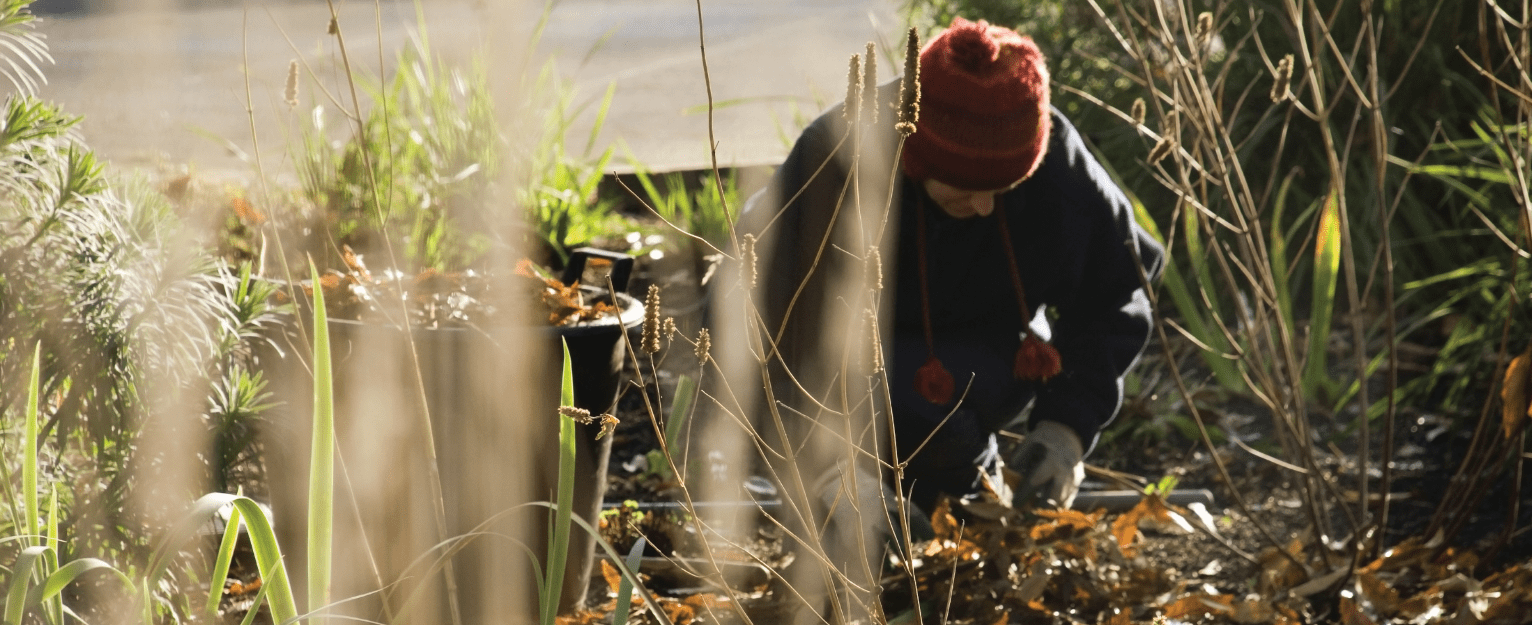
Now that the colder months and the end of the growing season are on the horizon, it’s time to start thinking about giving your garden the helping hand it needs to get through the winter (especially if you enjoy growing and maintaining a garden full of varying plants). Many of the plants native to the UK are equipped naturally to battle the harsh temperatures of our winters. Still, the potted plants you keep on the composite decking, and perennials, and any other Mediterranean / tropical plants used to warm, gentler climates can easily fall victim to frost and snow.
So if you’ve taken a few spontaneous trips to the garden centre this summer and you now have a garden full of plants which you’re unsure will last the winter – don’t worry! At Savoy Timber, we know that creating a beautiful garden is only half the job; the rest is all about maintaining your efforts. That’s why we’ve pulled together these four easy DIY tips for keeping your garden alive and kicking over the winter months, so you can enjoy your beautiful blooms once again come springtime.
The first thing to consider when preparing your garden for the winter is what needs protecting. As we said, not everything you’ve grown or planted will be susceptible to the cold. There are a variety of tough and evergreen species, no matter the seasons. Plants and bushes like holly, silver birch and hawthorn should already have everything they need to make it through the cold unscathed. And bulbs already planted in autumn, like lily of the valley, daffodils, hyacinth and snowdrops, will be safely tucked away underground.
As for more tropical and potted plants, they’ll need extra care to keep them comfy throughout the winter. There’s plenty of online information and resources on identifying which plants can and can’t be left to their own devices over the winter period.
The simplest way to give your potted plants a better chance of surviving the water is simply moving them out of the cold. If you have the space to bring a few plants inside, or at the very least place them in a sheltered area on your timber decking, then absolutely do that. A job as easy as moving your plants across the garden can make all the difference, even if they are still outside. If you have a sheltered structure like a shed, this could help, too. Ideally, a greenhouse would be the first choice for your more cold-sensitive plants, but there might be all sorts of reasons why you may not have done. These days, you can pick up portable mini greenhouses that come in really handy in cold weather. They’re also great for your seedlings all year round, but they make all the difference in winter. These compact greenhouses can fit snugly onto your composite decking, the corner of your yard or even on a balcony, so they’re a worthy investment if you’re short on space.
Adding mulch around the base of plats is another way to ensure they have the best chance to thrive over winter. What is mulch, you ask? Mulch could be any number of things: leaf mould, manure, compost from your garden, bark chippings – you name it. Basically, it’s anything biodegradable and full of nutrients that’ll add an extra layer of warmth and protection to your beds. The bonus of doing it this way is your plants will get all the nutrients as the mulch breaks down, so not only are you protecting them, but you’re giving them everything they need to grow back strong and beautiful.
Moreover, the local wildlife, from bugs to birds, will be very grateful you chose to do this. It makes for a great shelter and food source for them in the colder months. So, if you enjoy watching the wildlife in your garden, this is the way to go.
If you’re wondering ‘should I cover my plants in winter?’ The answer is yes! Much like we wrap up with extra layers and blankets in the winter, you can do the same for your plants. If you’re not into the idea of mulch or don’t have that many plants, here’s a handy alternative. It’s simple and easy, and all you need is some horticultural fleece or, even more accessible, newspaper or cling film. Ideally, you’d use heavy-duty horticultural fleece, but these other options make great substitutes. Wrap up your plants like you would if you were trying to protect yourself from the cold; the colder it is, the more layers you use. Check on them frequently to ensure everything is as it should be and replace them as needed. It works like a charm while still being cheap and convenient – who said gardening had to be expensive?
Protecting your plants doesn’t have to be complicated. All you need is preparation and some spare time and you can persevere in your beautiful garden for next year’s bloom. And don’t forget, if you need any advice, our team here at Savoy Timber is always ready to lend a hand. Whether you’re looking to get some composite or timber decking down before the winter sets in or stock up your garden accessories for some autumn planting, don’t hesitate to contact us on 0333 272 7985 – we’re here to help!